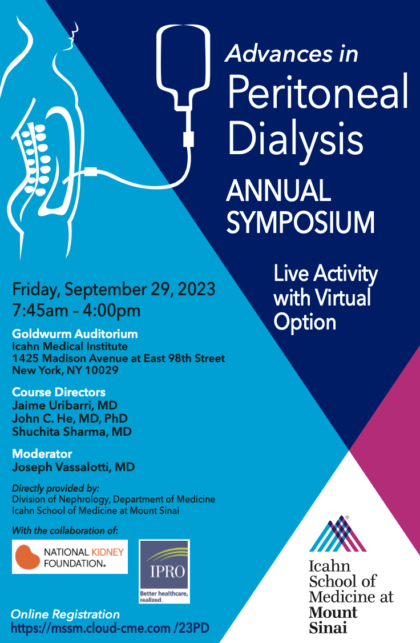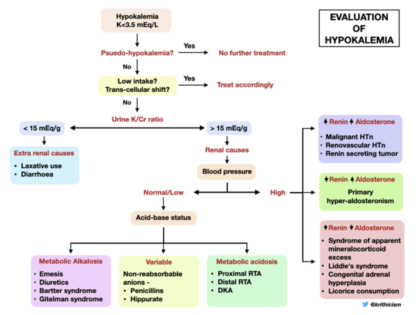James Bannister, Resident, Sunderland Royal Hospital, UK
Jamie Willows, Renal Fellow, Sunderland Royal Hospital, UK
Introduction
When patients on dialysis are admitted to the hospital with a broken bone or a pericardial effusion, for example, they need at least two teams caring for them: a collaboration between the primary team dealing with the acute problem and their nephrology team providing the dialysis, and an additional layer of care.
Our experience tells us that patients receiving dialysis have different considerations to the routine work other teams are comfortable providing. Every nephrologist has seen patients on dialysis prescribed “maintenance iv fluids” or “routine phosphate-based bowel prep” on other wards, and don’t get us started on the aversion to the necessary use of intravenous contrast for CT, as we see this all the time too.
Interpreting laboratory studies can equally be a minefield. There should be no expectation that other teams should know off the top of their heads the level of detail required to interpret the tricky cases below, and while we hope these examples are educational in themselves the only real take home point is that patients on dialysis are frequently complicated so always maintain communication with their nephrologist when caring for them!
(some details changed or invented to fully protect anonymity)
Tricky Testing Case 1 – Pregnancy
A female in her 20s on thrice weekly hemodialysis had a positive urinary pregnancy test and a confirmatory serum beta-human chorionic gonadotropin (B-HCG) level of 35,000 mIU/ml. This level was thought to be consistent with a 7+ week gestation, but ultrasound scan demonstrated a gestation sac that was too small for that level of gestation with no fetal heartbeat, suggestive of a non-viable pregnancy. The patient was given this bad news. However, B-HCG levels continued to climb on serial testing and a repeat US scan 1 week later demonstrated a viable intrauterine pregnancy consistent with 6 weeks gestation, which continued to develop normally thereafter.
B-HCG levels can be elevated in patients with ESKD and this can lead to misinterpretation, even though home urinary testing kits clearly demonstrate kidney elimination of this hormone. One can even falsely infer pregnancy as non-pregnant patients on dialysis can actually have B-HCG levels 10 times the upper limit of normal, or as with the above case, one can misdiagnose non-viable pregnancy when the B-HCG level and size of the gestational sac do not match. If seeking to rule in pregnancy then serial B-HCG measurements and confirmation on ultrasound are vital for the patient on dialysis. However, the awareness that low level ‘false positives’ exist is also important, as routine testing prior to CT imaging or surgical procedures can lead to delays in care for women on dialysis when the results are misinterpreted.
Tricky Testing Case 2 – Hyperosmolar hyperglycaemic state (HHS)
A patient in her 60s with ESKD and anuria due to insulin-dependent type 2 diabetes had missed one dialysis session due to a short vomiting illness, and then presented to hospital confused but otherwise well-appearing with normal vital signs. Labs showed serum sodium 128 mmol/L, potassium 4 mmol/L, serum urea 42 mmol/L (BUN 116 mg/dL), serum glucose 37 mmol/L (667 mg/dL), serum bicarb 20 mmol/L, without ketonemia. The admitting team were concerned the confusion and high glucose could represent hyperosmotic hyperglycaemic state (HHS), and applied the formula recommended in the latest iteration of UK diabetes guidelines of Calculated Osmolality = (2 x Na) + glucose + urea to give a calculated osmolality of 335 mOsm/kg, which they felt clinched the diagnosis. They treated her with 3L of iv saline over the next 6 hours as per protocol, and unfortunately she developed pulmonary edema and required hemodialysis when she developed an oxygen requirement.
Unfortunately, intravenous fluids are not always given respect as a potentially dangerous drug like they deserve, and this continues to harm patients on dialysis in settings where clinicians try to manage DKA, prevent contrast-associated nephropathy, or even think that an anuric patient may benefit from routine ‘maintenance iv fluids’. In this case the low serum sodium and relatively short illness should have led doctors away from misdiagnosing HHS, which then led to the reflexive prescription of iv fluids. The situation is likely to repeat itself when UK 2023 national guidelines continue to state “Urea is not an effective osmolyte but including it in the calculation is important in the hyperosmolar state, as it is one of the indicators of severe dehydration” without reference to the situations in which this is a fallacy, such as patients with CKD in whom their chronically elevated BUN gives you little insight into their hydration status. North American guidelines acknowledge that urea is not an effective osmole and cannot usually effect major change in intravascular volume or osmotic gradients across cells, and so recommend using only effective osmolality calculations in their guidelines, meaning that patients with CKD are not negatively impacted by their application like in the UK.
Tricky Testing Case 3 – Insulinoma
A patient in her 80s with ESKD on thrice weekly haemodialysis due to ADPKD was admitted with severe sepsis. She experienced several episodes of hypoglycaemia during the admission having never had these before, as she did not have diabetes and was not on any hypoglycemic agents. She underwent CT imaging to look for insulinoma which was negative. Endocrinology were consulted who checked her c-peptide levels and insulin levels, and found them significantly above the “normal range”. A 72 hour fast was arranged, but after further discussion was canceled by the nephrologist, who noted that the levels were in keeping with previously reported values in the ESKD population.
The literature indicates that patients on dialysis have much higher c-peptide values in the absence of diabetes even compared to patients with diabetes who have normal kidney function, which is logical given that around 70% of c-peptide is cleared by glomerular filtration. Hyperinsulinemia is also found in ESKD, though higher levels of hepatic clearance of inulin mean these values are less marked. Spontaneous hypoglycemia is common enough in inpatients with ESKD that the nephrologist could expect to see it several hundred times more frequently than insulinoma, especially in the context of patients with severe infection and reduced reserves, where it is a negative prognostic sign. Mechanisms of this spontaneous hypoglycemia in ESKD likely include decreased gluconeogenesis from the kidneys, decreased insulin degradation, use of beta-blockade, and susceptibility to anorexia and malnutrition. This case again shows how patients with ESKD can confound the usual diagnostic pathways when other specialists do not factor in their kidney disease.
Conclusion
Certain tests are difficult to interpret in the patient undergoing dialysis, which is further compounded by the significant heterogeneity within this population based on differential clearance from different levels of residual kidney function or the frequency and type of dialysis. This means that a “normal range in patients with ESKD” often can’t exist, and for many investigations will never even have been studied. The only way to navigate these challenges is collaboration between the renal team and other specialists involved in the patients care, to draw on the essential experience that both sides bring to the table.
Reviewed by Matthew A. Sparks


